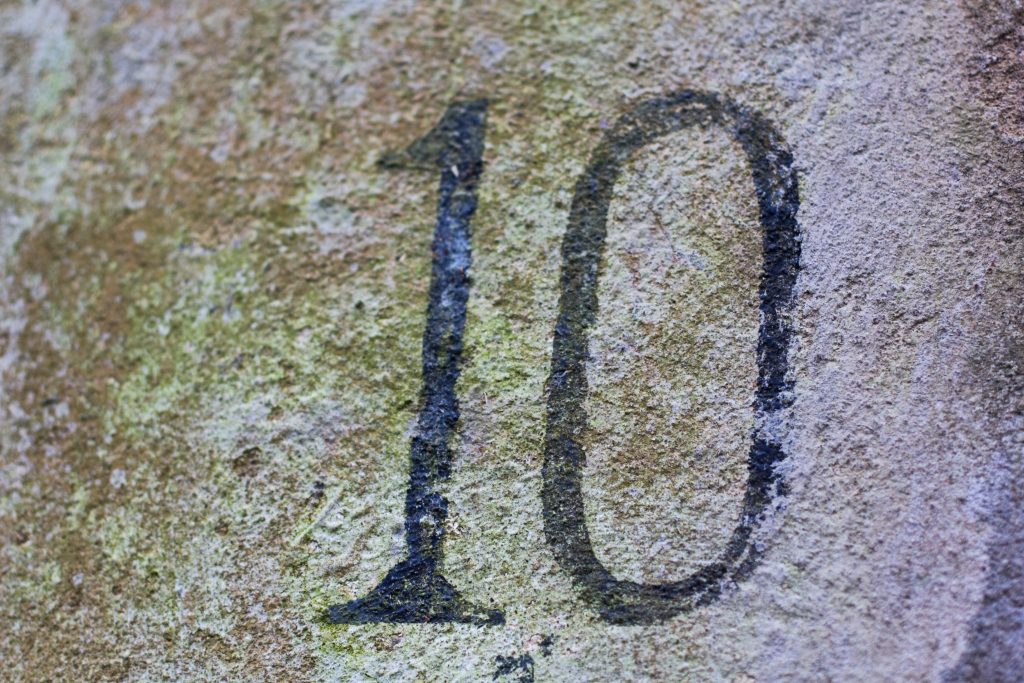
I’ve suggested that our lives ought to be oriented around the work God is doing in his people to make them—us—more like his Son. I’ve also suggested that this work can be compared to an exercise program.
Although I think the analogy is helpful, I also recognize that it isn’t really useful unless the Scripture gives us reason to think that the sanctification process is in some ways similar to physical exercise.
Is there any evidence of that? Is there a biblical word for spiritual strength? And are there “exercises” attached to it?
There are of course words in the Bible that are translated “might” or “power” or “strength.” The most well-known one, I suppose, is the Greek dunamis; I suspect you’ve heard a preacher somewhere say that “this is the Greek word from which we get our word dynamite.” It’s used often in the New Testament in reference to the “power of God,” and once we’re told that it “works in us” (Ep 3.20). So that might be a profitable study for us.
I’d like to direct your thinking, though, to a different word, one that might not come to mind in this connection. It’s the word grace.
I suspect you’re thinking that you know what grace means, and it’s not “strength.” You learned in Sunday school that it means “unmerited favor”—“God’s Riches At Christ’s Expense.”
And indeed it does. It refers to anything you’ve received that you don’t deserve.
But you also know that words have multiple meanings. If you look up pretty much any word, in pretty much any language, the dictionary will list several definitions, or nuances, for it. Humans are creative—because they’re in the image of God, who is creative—and we make up new meanings for our words all the time. (Teenagers are especially good at this.)
Thus one of the basic steps in studying any word is to determine the various meanings it has. In the case of grace (charis in Greek), it can have several meanings—for example, a present or gift (Ac 24.27; 25.9); credit (Lk 6.32-34); honor (Ac 2.47); and, yes, unmerited favor (Ac 15.11). But occasionally it’s used in a more specific, perhaps even technical, sense, of a particular thing you don’t deserve—namely, spiritual strength. You can see this especially in 2Co 12.9, where Jesus says to Paul,
“My grace is sufficient for you,
for power is perfected in weakness.”
Note the parallelism between these two clauses; grace is in parallel with power (Greek dunamis). It’s no surprise that this verse is often used in theology as a proof text for the omnipotence of Christ and therefore for his deity.
Grace is strength. So Paul tells young Timothy, “Be strong in the grace that is in Christ Jesus” (2Ti 2.1).
So here’s our biblical question: does the Scripture ever use the word grace in the sense of spiritual strength, where the context indicates a mechanism for building that strength—a spiritual exercise, if you will?
Does the Bible tell us how we can “exercise [Greek gumnazo, as in gymnasium] ourselves unto godliness” (1Ti 4.7)?
Well, the Greek word charis, “grace,” occurs 160 times in the New Testament; that’s quite a list of verses to go through. From those 160 occurrences, we need to select those that are speaking of spiritual strength; then from that smaller list, we need to select any occurrences that specify an exercise for building spiritual strength.
That’s gonna take some time.
Fortunately, there are people who have already done that work, and we can benefit from their labors.
There are three passages in the Scripture that seem to have what we’re looking for, and each of those passages specifies a different spiritual exercise.
The great thing about this exercise program is that it doesn’t matter what kind of shape you’re in at the moment; you can get started right away, and you don’t have to pace yourself to prevent a cardiac event.
Oh, and you have a Trainer who has the supernatural ability to impart his infinite strength to you whenever you need it, so you can keep making progress. “Just 10 more reps,” indeed.
Best fitness program ever.
Next time, we’ll drop by the gym and begin examining the exercise machines.
Part 3 | Part 4 | Part 5 | Part 6
Photo by Jelmer Assink on Unsplash






